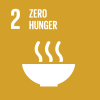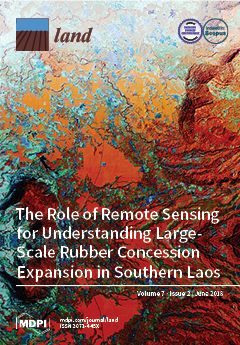
Average income of small-scale food producers, by sex and indigenous status
Last updated on 1 February 2022
This indicator is currently classified as Tier II. The Food and Agriculture Organization of the United Nations (FAO) is the main Custodian agency for this indicator in cooperation with the World Bank.
Unit of measure: Average annual income of small-scale food producers (in constant PPP 2011 USD) complemented by average income of large-scale food producers (in constant PPP 2011 USD)
Why is this indicator important?
This indicator measures the incomes of small-scale producers as a means of eliminating hunger and achieving other SDGs (e.g., poverty alleviation). Ending hunger requires long-term, sustainable food production systems and resilient agricultural practices. Developing efficient and robust food production programs to the boost agricultural productivity of small-scale producers is essential to maintain food supplies, increase incomes for poor and vulnerable groups, and feed the planet. It also contributes to strengthening rural development.
By tracking the income of small-scale producers by sex, community of reference, and enterprise size, data collected for indicator 2.3.2 enables governments to shape, prioritize, and invest in policies and measures that effectively boost agricultural productivity, drive economic growth, and eliminate hunger in particular for small-scale food producers, including women, Indigenous Peoples, family farmers, and pastoralists.
How is the indicator measured and monitored?
Data and information on income of small-scale producers is limited in many countries, but better accessible compared to the information available for indicator 2.3.1. Similarly, information is often collected at household level instead of food production unit level. The indictor can be disaggregated by sex, type of enterprise, and by community of reference.
According to the metadata brief, sources of information are either agricultural surveys, or agricultural modules in integrated household surveys (e.g., LSMS-ISA) organized by the national statistical agencies, with the necessary support from the World Bank, FAO and other international agencies. FAO has been working on computing the indicator for eight developing countries in Sub-Sahara Africa based on data collected from the Living Standards Measurement Study-Integrated Surveys on Agriculture (LSMS-ISA) surveys. Results have not been disseminated yet. In collaboration with IFAD and the World Bank, FAO also promotes the Agricultural and Rural Integrated Surveys project (AGRISurvey) which collects relevant data on an annual basis.
By Anne Hennings, peer-reviewed by FAO.
Official indicator data
The income from on-farm production activities includes income from crop production, livestock production, fisheries and aquaculture production, and from forestry production. The indicator is computed as annual income.
* Select "year" below to see the most recent data for more countries.
Other related indicators on Land Portal
In addition to the official indicator data, the following indicators provide information concerning the importance of agriculture in a given country or the distribution of land.
| Indicator | Min-Max Number of years |
Countries / Obs | Min / Max Value |
|---|---|---|---|
| Agriculture - Value Added | |||
| Employees in Agriculture - Female (% of female employment) | |||
| GDP per capita, PPP (constant 2011 international $) |
Women Farmers’ Land Rights: Closing the Global Gender Gap in the Midst of Climate Change
(IPS) – In Meghalaya, India’s northeastern biodiversity hotspot, all three major tribes are matrilineal. Children take the mother’s family name, while daughters inherit the family lands.
Because women own land and have always decided what is grown on it and what is conserved, the state not only has a strong climate-resistant food system but also some of the rarest edible and medicinal plants, researchers said.
Call for proposals: Voice by the Netherlands Ministry of Foreign Affairs, Oxfam Novib and Hivos
Deadline:
31/12/2017
Voice is a new innovative grant facility that supports the most marginalised and discriminated people in ten low- and lower-middle income countries in Africa and Asia. It aims to amplify and connect thus far unheard voices in efforts to leave no one behind.
Voice stands out from other grant-making programmes by developing a grant application and reporting process adapted to the five target groups and four grant types and that is accessible, user-friendly and innovative.
The pros and cons of commercial farming models in Africa
Colonialism brought large-scale farming to Africa, promising modernisation and jobs – but often dispossessing people and exploiting workers. Now, after several decades of independence, and with investor interest growing, African governments are once again promoting large plantations and estates. But the new corporate interest in African agriculture has been criticised as a “land grab”.
World Food Day 2019
The Food and Agriculture Organization of the UN (FAO) designated 16 October World Food Day in 1979. The Day has been celebrated annually since 1981.
Paginación
Adoption of Small-Scale Irrigation Farming as a Climate-Smart Agriculture Practice and Its Influence on Household Income in the Chinyanja Triangle, Southern Africa
This article is concerned with the adoption of small-scale irrigation farming as a climate-smart agriculture practice and its influence on household income in the Chinyanja Triangle. Chinyanja Triangle is a region that is increasingly experiencing mid-season dry spells and an increase in occurrence of drought, which is attributed largely to climate variability and change.
Land resource planning for sustainable land management. Current and emerging needs in land resource planning for food security, sustainable livelihoods, integrated landscape management and restoration
A review of needs at various scales for tools and processes that can help countries and stakeholders meet emerging challenges, address increasing degradation of and competition for resources, support the sustainable use and restoration of land and water resources, and ensure resilient ecosystems.
Towards productive landscapes: Trade-offs in tree-cover and income across a matrix of smallholder agricultural land-use systems
One of the main causes of tropical forest loss is conversion to agriculture, which is constantly increasing as a dominant land cover in the tropics. The loss of forests greatly affects biodiversity and ecosystem services. This paper assesses the economic return from increasing tree cover in agricultural landscapes in two tropical locations, West Java, Indonesia and eastern Bangladesh.
The Consumption, Income, and Wealth of the Poorest
This paper provides new empirical
insights on the joint distribution of consumption, income,
and wealth in three of the poorest countries in the world —
Malawi, Tanzania, and Uganda — all located in Sub-Saharan
Africa (SSA). The first finding is that while income
Effects of Income Inequality on Aggregate Output
This paper estimates the effect of
income inequality on real gross domestic product per capita
using a panel of 104 countries during the period 1970–2010.
The empirical analysis addresses endogeneity issues by using
instrumental variables estimation and controlling for
Paginación
![]()

By 2030, double the agricultural productivity and incomes of small-scale food producers, in particular women, indigenous peoples, family farmers, pastoralists and fishers, including through secure and equal access to land, other productive resources and inputs, knowledge, financial services, markets and opportunities for value addition and non-farm employment
Indicator details
The indicator is conceptually clear, has an internationally established methodology and standards are available, but data is not regularly produced by countries.
Key dates:









